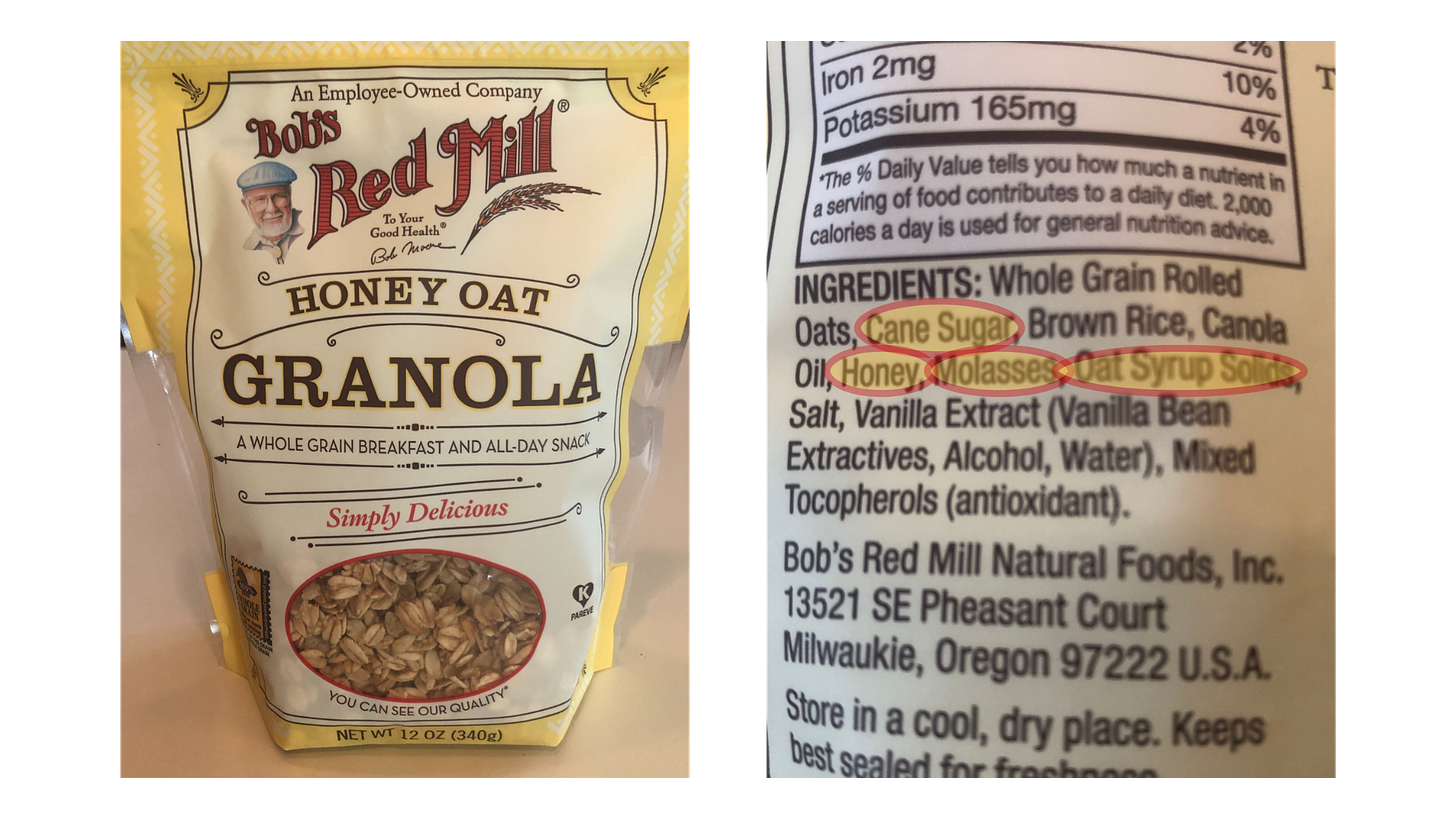Decoding food labels
Reading and understanding the information printed on food labels is an important part of being healthy.
Guest post by Dr. Kristina Carman
An ideal diet limits the amount of packaged food you eat to almost none. Ideally, you should be eating fresh proteins, fruits, and vegetables, and cooking with whole, raw ingredients that don’t come wrapped in a box.
But some amount of packaged or processed foods is inevitable, and in those instances, it’s important to read and understand the information printed on the label.
Make no mistake, food companies are very adept at coming up with language that can mislead or trick you into thinking something is healthy when it actually isn’t. Just because a product is labeled "natural" or "healthy" doesn't necessarily mean it’s good for you.
Luckily, once you know the tricks it gets easier to sort out what’s junk and what’s good.
Here are four simple tips to start with:
Scan the first three ingredients. Ingredients are listed in order from the highest to lowest content, so the first few things you see make up the bulk of what you are eating.
Avoid anything hard to pronounce. If it looks like it belongs in a science textbook, it doesn't belong in your body.
Stay away from long ingredient lists, because that means the food is highly processed
Be sure to check the ‘serving size’. The label may look like the food is low in salt or sugar, for example, but when you look at the number of servings you realize you may be eating three or four times that amount if you finish the entire package.
Sneaky Names for Sugar
Food producers love to hide sugar in all kinds of places. Why? Because it’s addictive! Sugar goes undercover by lots of unexpected names (as many as 60!). Check out the list below and you'll see what I mean:
Organic cane sugar
Evaporated cane juice
Brown sugar
Coconut sugar
Agave nectar
Brown rice syrup
Rice bran syrup
Oat syrup
Maple syrup
High fructose corn syrup
Barley malt (syrup)
Corn sweetener
Dextrose
Fructose
Glucose
Galactose
Maltose
Ethyl maltol
Fruit juice concentrate
Maltodextrin
Carob sugar
Beet sugar
Molasses
Honey
Caramel
Disaccharides
What's extra deceptive (and confusing) is that when a food manufacturer adds sugar in a number of different forms, they don't have to list it as the first ingredient!
Here's an example:
Watch out for these wily ingredients, too!
ADDED FLAVORS
o Monosodium glutamate (MSG)
o Aspartame
o Sucralose
o Saccharin
o Acesulfame potassium
o Yeast extract
o Natural flavors
o Artificial flavors
PRESERVATIVES
o Nitrates
o Nitrites
o BHA (Butylated hydroxyanisole)
o BHT (Butylated hydroxytoluene)
o Potassium bromate
o Propyl paraben
EMULSIFIERS
o Carrageenan
o Maltodextrin
o Polysorbate 80 (PS80)
o Carboxymethylcellulose (CMC)
o Soy lecithin
o Xanathan gum
o Polyglycerols
ADDED COLORS
o All added colors should be avoided (especially Red 3, Red 40, Yellow 5, Yellow 6, Blue 1, Blue 2 and Green 3)
o Titanium dioxide (color additive)
Beware of ‘healthful’ sounding labels
When something is labeled ‘low fat’, that means it contains 3 grams of total fat or less per serving. But does ‘reduced fat’ mean the same thing? No, actually it doesn’t! All it means is that, compared to the original product, it has 25% less fat. So, if a product has 20 grams of fat, its reduced-fat version could still contain 15 grams of fat, which is quite a lot. The other thing to note is that ‘reduced fat’ products often contain a lot of sugar.
Similarly, products labeled ‘light’ (or ‘lite’) don’t necessarily mean ‘healthy’. That term could mean less fat than the original version, or fewer calories, or less sodium. But it can also refer to the food’s texture or color being lighter than the original. Once again, forewarned is forearmed.
Be a smart shopper
So where does all that leave us? If you’re feeling overwhelmed, don’t worry. Try to eat as many whole, unprocessed foods as possible. Before you reach for a boxed or bagged food, give it a quick glance. If the ingredients list is eye-wateringly long, put it back. Make sure you read the first three or four ingredients carefully — they make up the bulk of what you’ll be eating. And think twice about any label that sounds too good to be true… it most likely is.





I live in Ecuador and you can read all the ingredients. Canned goods have for instance have 3 or 4 ingredients. A can of corn says corn, water, sugar and salt. Then it says no colorants or preservatives. Our food is clean. Everyone who moves here from No America loses weight. Also our inflation is less than 2% because this country does not spend all its money on military. Most problems in the country are fueled by CIA interference.
Now do industrial seed oils.